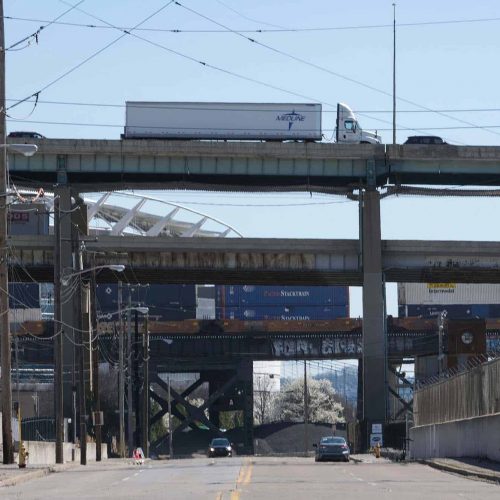Introduction
After President Joe Biden revealed his $2 trillion infrastructure plan last month, advocates and historians began to worry how the money would be distributed. The country is still feeling the unequal effects of the last hefty infrastructure bill.
The Federal-Aid Highway Act of 1956 put the federal government in charge of determining new freeway routes in America, a proposed solution to traffic congestion around cities. But many of these highways were built through neighborhoods of color, displacing people, destabilizing communities and exposing residents to pollution.
Middle-class and affluent white communities were largely left alone, benefiting from the construction without feeling the downsides.
The Highway Act provided relocation packages so states could assist those losing their homes to the interstate system, but many states moved families to already overcrowded areas, said Chandra Bhat, director of the Data-Supported Transportation Operations and Planning Center at the University of Texas at Austin.
Biden’s plan cites this history. The White House says the proposal earmarks $20 billion to “reconnect neighborhoods cut off by historic investments and ensure new projects increase opportunity, advance racial equity and environmental justice, and promote affordable access.”
But if the plan is approved, experts warned that the people whose lives are most affected by the ongoing effects of the Highway Act will have less power to influence the way these new funds are spent — unless there’s an organized effort to overcome that. People of color have disproportionately longer commute times and, on average, less money to cover extra child care, which makes it harder to attend public forums and find time for other efforts to get their voices heard.
Bhat’s recommendations: free transportation to in-person events and complimentary child care there.
“It’s important, even as we allocate so much money to infrastructure development, to invest a good amount of money on community engagement,” Bhat said. “A bottom-up approach will teach how to spend this money best.”
Without such efforts, he said, people with more resources — often white — have far more opportunities to weigh in and lobby.
That’s what happened with past highway projects. As transportation historian Peter Norton told Vox in 2016, affluent communities were able to keep interstates out: “The destruction mostly happened in the most disenfranchised neighborhoods.”
Samuel Jordan, president of the Baltimore Transit Equity Coalition, said analyses intended to figure out the most equitable and cost-effective way to handle projects must be conducted before agencies propose specific transportation plans.
“We need to know where the impacts fall and how they get distributed,” Jordan said. “And we need alternatives to these systems that are less egregious if there will be burdens — then we can share them equitably.”
It’s not enough to simply let states decide how to spend federal transportation money and hope the result is fair, he said. He pointed to Maryland’s big spending on highways that benefit people with cars, while underfunding public transit that lower-income residents rely on.
Biden’s infrastructure bill, which he plans to fund by raising corporate tax rates, could be voted on by Congress in July. House Democrats support the bill. Republicans oppose it.
If it passes, Jordan hopes that highways and other road projects don’t get the lion’s share of the funds.
Kimberly Cataudella is a data fellow at the Center for Public Integrity. She can be reached at kcataudella@publicintegrity.org. Follow her on Twitter at @kcataudella.
Read more in Inside Public Integrity
Watchdog newsletter
Q&A: Is Biden’s affordable housing plan enough?
Low-income housing advocates say Biden’s housing plans would help but not entirely fix the affordable housing crisis.





Join the conversation
Show Comments